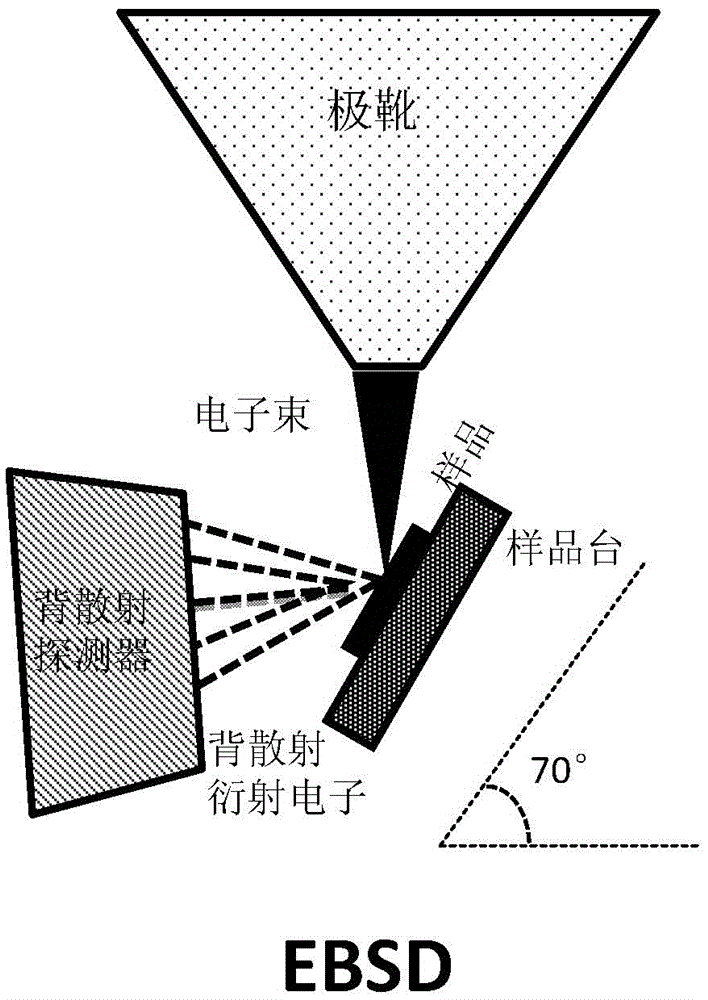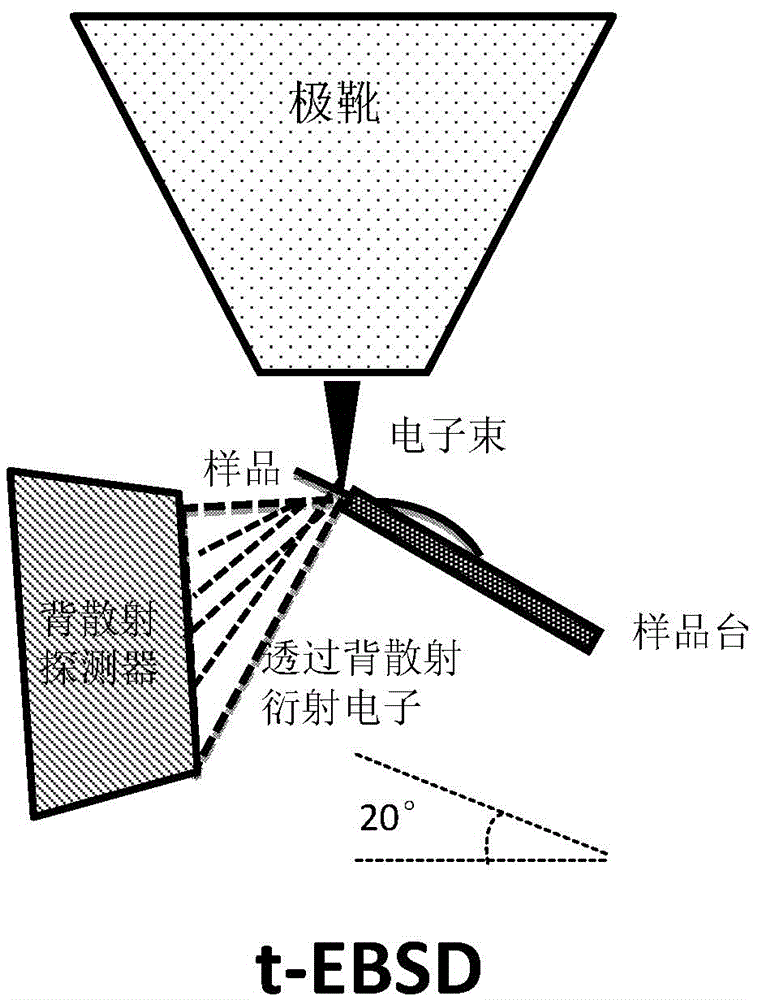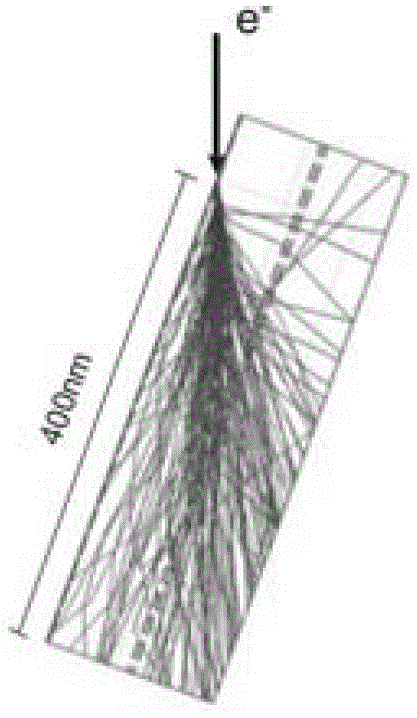SEM transmission electron Kikuchi diffraction apparatus and analytical method
A technology of transmission electron and Kikuchi diffraction, which is applied in the field of materials, can solve the problems of inability to analyze nanoparticles, poor spatial resolution, and poor measurement accuracy of unit cell parameters, so as to expand the application space, solve large distances, and shorten working distances. Effect
- Summary
- Abstract
- Description
- Claims
- Application Information
AI Technical Summary
Problems solved by technology
Method used
Image
Examples
Embodiment 1
[0062] Example 1: t-EBSD characterization of zirconia nanocoatings
[0063] Thermal barrier zirconia coatings are widely used in hot-end components such as blades of aero-engines. Its low thermal conductivity reduces the thermal load on the substrate, protects the substrate and prolongs its service life. Understanding the grain phase composition and size distribution of thermal barrier zirconia coatings plays a crucial role in improving its service performance. The ion-thinned zirconia coating was characterized by t-EBSD, the backscattered electron diffraction voltage was 30kV, the current was 6.4nA, and the working distance was 1mm. Figure 8 The characterization results shown. The inconsistency of the thickness of the sample causes the band contrast of each region of the sample to be different, and the smallest diameter is only 30nm ((ZrO 2 ) 0.88 (Y 2 o 3 ) 0.12 ) grains. and according to Figure 9 , the average MAD of t-EBSD is 0.38°, indicating that the Kikuchi di...
Embodiment 2
[0064] Embodiment 2: t-EBSD characterization of titanium oxide nanopowder
[0065] TiO 2It is a material widely used in the field of photocatalysis, and its common crystal form is anatase and rutile with better photocatalytic performance. Grain size is the effect of TiO 2 An important factor of photocatalytic activity, the smaller the crystal grain, the more fully exposed the crystal active center, which is conducive to the improvement of catalytic activity; at the same time, the photogenerated carriers of small grains are easier to diffuse from the inside of the grains than large grains. Migrating to the surface is beneficial to promote the generation of the reaction and improve the photocatalytic efficiency. Therefore, for nanoscale TiO 2 The characterization of the grain size and crystal form of the particles is of great significance for the study of its photocatalytic performance.
[0066] Figure 11 is TiO 2 The secondary electron image of the nanopowder, a small gr...
PUM
 Login to View More
Login to View More Abstract
Description
Claims
Application Information
 Login to View More
Login to View More - R&D
- Intellectual Property
- Life Sciences
- Materials
- Tech Scout
- Unparalleled Data Quality
- Higher Quality Content
- 60% Fewer Hallucinations
Browse by: Latest US Patents, China's latest patents, Technical Efficacy Thesaurus, Application Domain, Technology Topic, Popular Technical Reports.
© 2025 PatSnap. All rights reserved.Legal|Privacy policy|Modern Slavery Act Transparency Statement|Sitemap|About US| Contact US: help@patsnap.com



